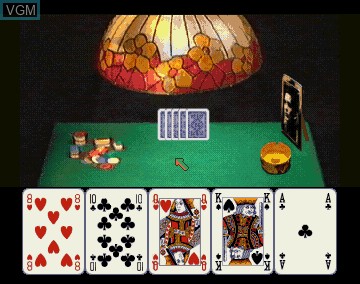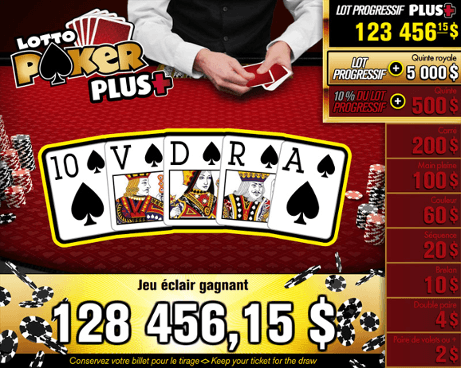Poker Suit Precedence
- Poker Suit Precedence Rules
- Poker Suit Precedence Meaning
- Poker Suit Precedence Against
- Poker Suit Precedence Definition
Poker hands from highest to lowest 1. Royal flush A, K, Q, J, 10, all the same suit. People sometimes ask this question about ranking of suits because they want to decide which of two royal flushes is higher in poker. In that case, the correct answer (for the official casino / tournament game) is that in poker all the suits are equal, and that when such a tie occurs you split the pot. This is how the suits ranking is. Suits have no value or meaning in poker. There are four suits: Spades, Hearts, Diamonds and Clubs to a standard deck of cards. There are 13 cards in a suit. Note that when comparing two hands, all suits are equal in Poker - the ranking of suits from games such as Bridge and Five Hundred have no bearing on evaluating Poker hands. Bridge order is, however, used for certain 'bring in' tie breakers, such as 7 card stud.
On the Ordering of Playing Card Suits
(or, why “CHaSeD” is bad for you)
Each individual playing card is identified by the unique combination of a value and a suit. The values are numeric in nature (if we assign 11, 12, and 13 to the Jack, Queen, and King, respectively); as such, we can order them easily, exploit their odd-even nature, use them in mathematical operations, etc. The methods underlying many effects are based on this numeric property of the values.
It’s equally useful to assign such characteristics to the suits. Many people order the suits simply by memorizing an arbitrary sequence (usually one that alternates the colours): thus we have such mnemonics as CHaSeD, SHoCkeD, DuCHeSs, CoDfiSH, and HiS DeCk.
The drawback of this approach is that it simply yields an order, and fails to assign useful numeric meanings to the individual suits. Should we need the third value in a numerical sequence, we instantly know that it is a three, but when we try to do this with suits, we introduce extraneous thinking (“Let’s see, I’m using the CHaSeD order, so the third one is a Club … Heart … Spade!”). Similarly, if we wish to make use of a suit’s value for some computational purpose, we are left with questions like “What is the value of a Heart?”
An obvious analogy here is the Latin alphabet. While most people know the sequence (ABCDEFG …), and thus can quickly determine which character follows “M”, few know the numerical values of the letters (their positions), and can instantly name the 17th letter, or know at which position “R” falls.

All of this is far from ideal. For playing cards, though, the problem is easily resolved, by exploiting the natural numerical order suggested by the standard French suits, indicated by the points or lobes in their shapes, as depicted here:
This particular ordering (which corresponds to the SHoCkeD mnemonic, though that’s a less useful way to recall it) has additional memorable significance. Spades are widely considered the #1 suit (hence the decorative Ace of Spades). The major suits (cf., Contract Bridge) are together, and precede the minor suits. The even suits are red, and the odd suits are black: black being the “odd” colour makes sense, as black isn’t really a colour (it’s the absence of colour). Further, the black symbols themselves are somewhat odd, enjoying limited recognition by non-card-players; the Heart and Diamond, on the other hand, are basic, universally recognized shapes.

Consequently, this is my personal choice — and strong recommendation — for the most effective playing card suit order. The concept dates back at least to the J. Russell Duck (aka “Rusduck”) publication of “Spades Hearts Clubs Diamonds” in Phoenix magazine (Issue #255, May 1952), pg. 1020. Once the most prevalent ordering used by European magicians, it has of late been supplanted by the much inferior CHaSeD sequence (a victory of imitation over imagination, with a consequent loss of functionality). But once you adopt and internalize it, you will often be reminded of its advantages, and immediately and forever know that the third suit is a Club.
… Doug Dyment
Knowledge of poker combinations is the basis of a successful game. The skills to distinguish the seniority of card ranks, to group them by value and suit, to calculate the probability of winning are mandatory for any poker player. This list contains:
- 10 traditional high-combinations that are used in Texas Hold’em, Omaha, Seven-Card Stud and Five-Card Draw Poker;
- Ace-to-Five low ranks are required in such variations of poker as Lowball and Razz, also combined with high-combinations in Omaha Hi-Lo and Hi-Lo Stud.
High ranks
It is worth starting training with high-combinations which are the most universal and understandable for a beginner. The poker combinations in this list are ranked by decreasing order.
Royal Flush
It is not considered an independent combination, as it is a rare and most successful case of a “straight flush”. Royal Flush or “Royal suit” is formed from five high cards of the same suit – 10, J, Q, K, A.
Poker Suit Precedence Rules
Straight Flush
One of the most valuable combinations in poker. Five cards of the same suit in consecutive ranking. If there is a two-straight flush on the showdown, the winner of the hand is determined by the high card.
Poker Suit Precedence Meaning
Four of a Kind
Translated as “four of a kind.” A hand is formed from four cards of the same value. The fifth extra card is called the kicker. If the combinations match, the player with the higher value cards wins.
Full House
A hand composed of three cards of the same value (Three of a kind) plus a pair. It can be said that “full house” form two less powerful poker combinations – “Set” and “Pair”. In a disputable situation, the winner of the hand is chosen according to the three, that is, the set with the highest cards.
Poker Suit Precedence Against
Flush
A combination of five cards of the same suit, not consecutive in value.
From two combinations, the flush at showdown wins with the one with the highest value card.
Straight
A hand of five cards in consecutive ranking. The suit in this combination does not matter. The best straight possible consists of A, K, Q, J, T with the highest Ace. Remember that the letter T in poker means 10. Ace or A can also be counted as 1 and form the youngest straight – 5, 4, 3, 2, A. In this case, the high card is 5. In a controversial situation with two straights, the player wins with a higher value card.
Three of a Kind
A combination consists of three cards of the same rank, without regard to the value and suit of the two other cards, which is sometimes called “trips” or “triple”. In a disputable situation, a triple card of higher value wins.

Poker Suit Precedence Definition
Two Pairs

A combination is formed using a pair of cards of the same value and another pair of the same value. If there is a match on the showdown, the precedence of the cards of the first pair is compared. If it coincided – compare the second pair. If the combinations are identical, the winner is chosen by the “kicker”
Pair
Two cards of the same value without suit. Three additional cards are not counted at the showdown. But when a pair of players matches, the winner of the distribution is determined by the seniority of the additional cards.
High card
The weakest combination in poker, as it allows any combination of cards according to their merits and suits. The winner is determined by the highest card. If the top card of the players matches, compare the second, third, and so on.
Ace to Five Low Ranking
At first, the logic of the formation of a lowball combination may seem a bit confusing and inconvenient. The fact is that in the game the weakest high-hand can become the strongest low-combination. It does not need a clear sequential, and the suit card, in principle, is not taken into account. Sometimes this system of forming poker combinations is called “California.” First you need to remember that the presence of the flush and straight does not affect the seniority of the low-hand. In low-hands from Ace to five, the strength of the hand is determined starting from the highest card. Therefore, be careful when forming a low-combination with an Ace – it will always be the youngest card equal to 1. The poker combinations in this list are ranked by decreasing order.
Five Low or Wheel
The strongest “ace-to-five” low combination possible. Always consists of 5, 4, 3, 2, A of any suit. If two “wheels” fell on the showdown, the combination holders split the pot in half.
Six Low
The combination of any unpaired cards with the top six. The lower second-highest ranking card wins the pot. For example: 6, 4, 3, 2, A is stronger than 6, 5, 4, 2, A, since in the first variant the second card is of less value. If the first and second cards match in combinations, the winner is determined by the third, fourth, etc.
Seven Low
The combination consists of any unpaired cards with the highest seven. The seniority of a combination in a disputable situation is determined by the same principle as in the previous examples. Combinations are identical means a draw. The bank takes the second card with lower seniority: 7, 6, 5, 3, and A is weaker than 7, 5, 4, 3, A.
Eight Low
The combination is formed from any unpaired cards with the highest eight. To determine the winner, you can use the same combination ranking methods, which have already been described in previous examples. It is very important to remember that the “Eight Low” is the weakest low-combination in such games as Omaha Hi-Lo and Stud Hi-Lo. It is clear from the name already that the game uses both high and low combinations. There is no “ace-to-five” restriction for Razze for a low-combination, and 9, T, K, Q, J, as well as their pairs can participate in the formation of hands.

+ A real feeling of excitement, a chance to win big money and prizes
+ Opportunity to get profitable bonuses, participate in promotions and tournaments
+ A wide selection of blackjack options are provided
+ You can plunge into the atmosphere of a real casino with live dealers+ The game takes place in a training mode, there is no risk of losing money and fear of losing
+ There is no need to register, make a deposit and download software
+ The perfect way to hone skills in a relaxed atmosphere and try different strategies
+ Great for those who like to play just for fun